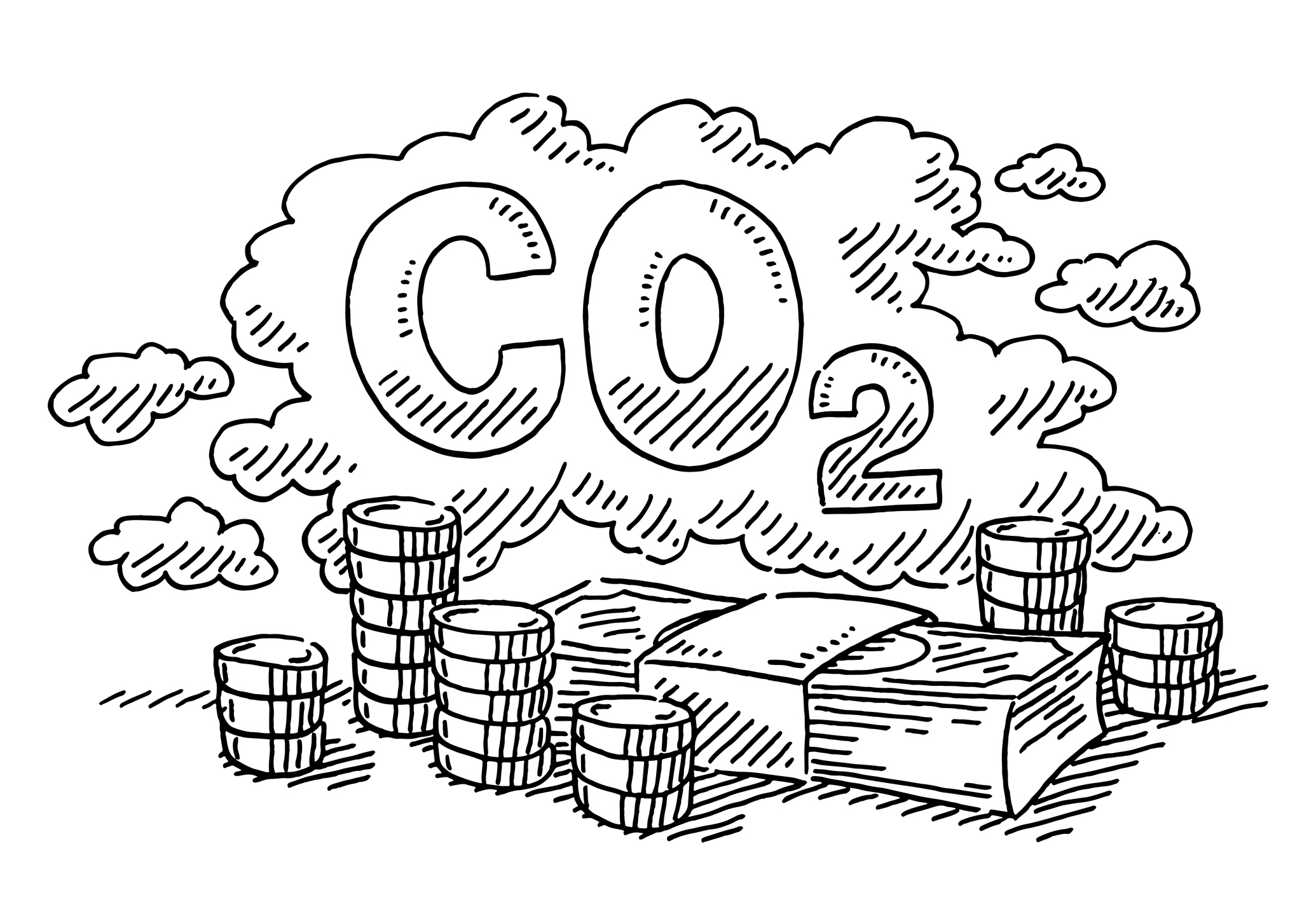India is moving steadily towards establishing a comprehensive carbon pricing ecosystem aimed at meeting its climate and development commitments. With the formal adoption of the Carbon Credit Trading Scheme (CCTS) in July 2024 and increasing alignment with global carbon markets, the country is setting the stage for a structured, rate-based Emissions Trading System (ETS).
According to the World Bank’s State and Trends of Carbon Pricing 2025 report, India has emerged as a notable player among emerging economies—alongside Brazil and Türkiye—in advancing carbon pricing frameworks and climate finance tools.
A Transition to Rate-Based Emissions Trading
Unlike cap-based systems where total emissions are limited, India’s ETS follows a rate-based model. Here, emissions are not capped outright, but each entity is assigned a performance benchmark to limit net emissions relative to output. This model offers greater flexibility, particularly for fast-growing economies like India, by accommodating industrial expansion while maintaining climate discipline.
The national ETS is set to initially cover nine energy-intensive sectors, including cement, steel, and power generation. Facilities outperforming benchmark emission levels will be issued tradable Credit Certificates. The scheme thus rewards efficiency while laying the groundwork for the Indian Carbon Market (ICM).
India’s Ministry of Power approved eight methodologies on March 28, 2025, for generating voluntary carbon credits. These include renewable energy, green hydrogen production, industrial energy efficiency, and mangrove afforestation. This move supports the broader aim of transitioning from existing schemes such as the Perform, Achieve and Trade (PAT) programme to a market-ready, credit-based system.
Emerging Economies in Comparison
Among peer economies, China operates a similar rate-based ETS focused on the power and heavy industrial sectors. Indonesia, too, follows a rate-based structure and has recently expanded its coverage. Brazil stands apart with a cap-based system, legislated in December 2024, covering all sectors barring agriculture. India’s carbon pricing framework is currently in the regulatory phase but is expected to become operational within the next fiscal year.
Voluntary Carbon Market: Expanding the Scope
India is developing a voluntary carbon market to include sectors currently outside the purview of the compliance mechanism. These encompass agriculture, afforestation, and clean cooking initiatives. The objective is to channel private capital towards climate-positive projects through transparent crediting mechanisms and market participation.
The regulatory backbone for this voluntary market is provided by the Energy Conservation (Amendment) Act, 2022. This law empowers the central government to issue carbon credit certificates, thereby legitimising both compliance and voluntary credit markets.
Policy Support and Institutional Framework
Several flagship initiatives are helping fortify India’s carbon market architecture. Among them is the National Green Hydrogen Mission, which aims to produce 5 million metric tonnes of green hydrogen annually by 2030. The mission is closely tied to the carbon credit mechanism through approved methodologies that recognise hydrogen’s potential as a low-emission fuel.
Meanwhile, the PAT scheme—implemented by the Bureau of Energy Efficiency (BEE) since 2012—has achieved a 15–25% reduction in emissions intensity in targeted sectors. It will gradually integrate with the ETS, ensuring a seamless policy transition.
India’s renewable energy ambitions remain central to its climate policy. The government aims to install 500 GW of non-fossil fuel-based power capacity by 2030, with carbon pricing acting as a complementary instrument to accelerate this shift.
Market Readiness and Governance
To strengthen governance, the National Steering Committee for the Indian Carbon Market (NSCICM) has been constituted. It includes representatives from key ministries, state governments, and industry stakeholders. The Committee is responsible for setting targets, issuing guidelines, and ensuring transparency in market operations. It also oversees the development of international trading mechanisms and verifies emission intensity reductions.
The Bureau of Energy Efficiency, functioning under the Ministry of Power, plays a pivotal role as the technical arm of India’s climate governance. Since its inception in 2002, BEE has deployed a combination of regulatory and market-based tools to drive energy efficiency across sectors such as industry, buildings, transport, and agriculture.
Enabling Behavioural Shifts
India’s approach also includes behavioural interventions. Launched as a global movement at COP27, Mission LiFE (Lifestyle for Environment) encourages individuals to adopt climate-friendly daily habits. The mission aims to mobilise one billion people by 2028 and transform 80% of Indian villages and urban bodies into green communities.
Complementing this is the Green Credit Programme (GCP), which was notified in October 2023 under the Environment Protection Act, 1986. GCP promotes tree plantation on degraded forest land, issuing digital credits to participants—ranging from individuals to corporations—who maintain the plantations over a decade. The scheme is designed to expand India’s green cover and incentivise voluntary environmental stewardship.
Towards a Carbon-Conscious Economy
India’s carbon pricing journey is firmly grounded in the principle of Common but Differentiated Responsibilities and Respective Capabilities (CBDR-RC), ensuring that climate action remains equitable and context-specific. With institutional structures now in place and policy backing strong, the country is poised to lead by example in aligning economic development with environmental sustainability.














